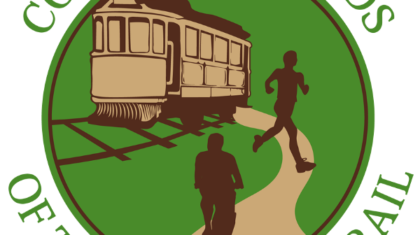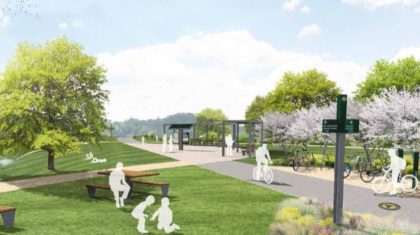By Jason Reyes, AICP, Associate, Alta Planning + Design
While traveling in October, I was impressed by Switzerland’s wayfinding system for hiking. It’s a simple system, but it is applied consistently in each city and rural area throughout the country is what makes it so useful. They are simply yellow signs that state the name of the route, pointed in the true direction of the route, with the number of minutes (and sometimes hours) to walk to the next destination. The routes go from city centers to alpine ridge lines, including sidewalks, side streets, shared-use paths, and dirt footpaths. Basic variation of the hiking signage includes:
- White/red/white tips on signs indicating more strenuous mountain paths
- White/blue/white tips on signs indicating Alpine routes (think rope & pick axe at this stage)
- Smaller waymarks between destinations to keep you on the path


The signage system is complimented by a consistently designed set of local and regional hiking maps (conveniently available at every train station), offering more information on each route segment and nearby destinations. As I investigated further, I found that this “Wanderweg” wayfinding is part of a larger program called “SwitzerlandMobility”. This network for non-motorized traffic is promoted by Switzerland’s tourism agency, and consists of the hiking network mentioned above, plus complementary systems for cycling, mountain biking, skating, canoeing, and slowUp (a series of car free Sunday routes and events).
The yellow signs for hiking trails, white signs for the barrier-free routes and red for cycling, mountain biking and skating. The numbered route information panels are green for hikers and barrier-free routes, light blue for cyclists, ochre (brownish yellow) for mountain bikers, violet for skaters and turquoise for canoeists. One-digit numbers indicate national routes, two-digit numbers indicate regional routes and three-digit numbers indicate local routes. The colors and numbering system is consistent for the on-the-ground signs, printed maps, and online maps and apps.

Other observations:
- The honor system in public transportation: There are no turnstiles at most rail stations, and no one asks for your ticket on the bus, allowing riders to move freely between systems (though it’s a hefty fine if you are found without a ticket or pass).
- Reliability of transit: Locals expect their buses and trains to arrive the very minute the schedule says it will, and most of the time they are not disappointed (they say you can practically set your watch to Swiss trains).
- Public trust and sense of safety: I observed five-year-olds walking down the sidewalk on their own (in a city of about 30,000), each with their bright yellow reflective vests. Friends who grew up there said everyone in the community is expected to look out for them. Gives a whole new meaning to safe-routes-to-school.
For more on SwitzerlandMobility, and to see some detailed route mapping, visit: www.schweizmobil.ch and map.wanderland.ch.


